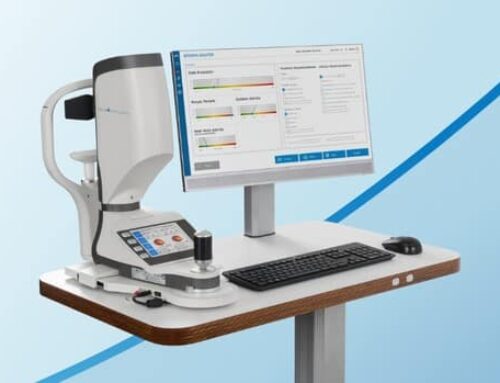Introduction
In the ever-evolving world of eye care, technological advancements are driving more accurate and effective diagnostic instruments. Among these innovations, the OCULUS Corvis® ST stands out as a pivotal development in glaucoma diagnostics. We will explore the nine standout features of the Corvis® ST that are transforming how eye care specialists diagnose and manage glaucoma and anterior segment conditions.
1. Precise IOP and Corneal Deformation Response Measurement
Firstly, let’s look into the precise IOP and corneal deformation response measurement. The Corvis® ST provides a comprehensive analysis by measuring intraocular pressure (IOP), corneal thickness, and corneal deformation response. This unique ability to determine IOP values unaffected by corneal biomechanical properties ensures higher accuracy in glaucoma diagnosis and treatment planning.
2. Efficient Corneal Ectasia Screening
Secondly, detecting corneal ectasia is more efficient with the Corvis® ST. By analysing deviations in deformation response parameters compared to normal eyes, eye care professionals can identify potential cases of corneal ectasia early and provide timely interventions.
3. Visualising the Effects of Corneal Crosslinking
Additionally, the visualisation and quantification of the effects of corneal crosslinking with the Corvis® ST is a game-changer. Unlike topographic changes that may take months to manifest, the Corvis® ST can detect biomechanical changes as early as four weeks post-procedure, offering valuable feedback on the success of corneal crosslinking treatments.
4. Advanced Evaluation of Corneal Biomechanical Response
Equipped with a high-speed Scheimpflug camera that captures over 4,300 images per second, the Corvis® ST records corneal reactions to air pulses. This enables precise IOP and corneal thickness measurements, facilitating better evaluation of corneal biomechanical response and enhancing tonometry and pachymetry assessments.
5. Biomechanical Corrected IOP (bIOP)
Moreover, the biomechanical correction feature of the Corvis® ST ensures accurate IOP readings, minimising dependence on corneal properties and thickness. In addition, the measurement principle ensures that tear film does not influence IOP measurements. Data is presented in an easy-to-read format, allowing clear interpretation and well-organised IOP follow-ups.
6. Corvis Biomechanical Index (CBI)
Another significant aspect is the Corvis Biomechanical Index (CBI). This index offers comprehensive biomechanical screening and aids in keratoconus detection. The Vinciguerra Screening Report compares a patient’s results with normative values, making it easier to assess their condition and track changes over time.
7. Tomographic Biomechanical Index (TBI)
By integrating Pentacam® data, the Corvis® ST enables a combined tomographic and biomechanical analysis through the Tomographic Biomechanical Index (TBI). Utilising artificial intelligence, this index optimizes the detection of ectasia, enhancing sensitivity and specificity for identifying patients at risk of developing ectasia post-refractive surgery.
8. Biomechanical Glaucoma Factor (BGF)
Specifically designed for glaucoma screening, the Biomechanical Glaucoma Factor (BGF) leverages the Corvis® ST’s biomechanical response to detect cases of normal-tension glaucoma (NTG) in patients with normal IOP. Biomechanical properties are highlighted as an independent risk indicator for NTG, providing eye care professionals with a valuable tool for early identification and appropriate clinical decisions.
9. Homburg Biomechanical E-Staging Display (BEST)
Lastly, the new BEST Display (Homburg Biomechanical E-Staging Display) is designed to track biomechanical changes over time, establishing a direct connection between treatment outcomes and baseline measurements. Ultimately, early detection is crucial for preserving vision in keratoconus patients. With the BEST Display, eye care professionals can intervene swiftly, making it an essential tool for effective management of this condition.
Enhance Your Practice with OCULUS Corvis® ST
In conclusion, the Corvis® ST offers unmatched precision in measuring intraocular pressure (IOP) and corneal biomechanical properties, leading to more accurate glaucoma diagnoses and improved treatment strategies. With its sophisticated capabilities, including effective corneal ectasia screening and visualisation of corneal crosslinking effects, it is an essential tool for eye care specialists.
By seamlessly integrating with Pentacam® data, the Corvis® ST offers a comprehensive analysis that enhances the detection of keratoconus and glaucoma. With the innovative BEST Display, you can track biomechanical changes over time and make informed clinical decisions to preserve your patients’ vision.
Reach out to our product specialists today to discover how the Corvis® ST can transform your diagnostic capabilities and improve patient care.







